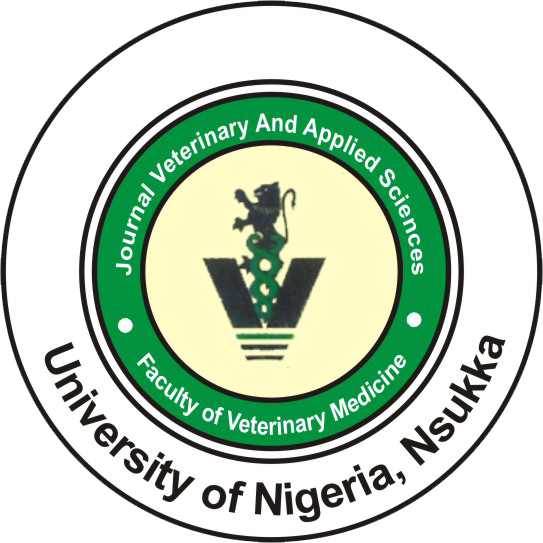University of Nigeria
ISSN: 2315 - 6856
e-ISSN: 2636 - 5553
Journal volumes
Powered by: RockSystems Global Services Ltd.
rocksystemsglobal@gmail.com (+2348035271306)
www.rocksystemsglobal.com
Volume 14, Issue 2: 2024 - Article 156
Abstract
The use of animals for research is a basic necessity in the biomedical and agricultural sciences, but trends in their use have not been evaluated in the University of Nigeria Nsukka (UNN). This study evaluated trends in the use of animals for research at the UNN across a five-year period (2019 – 2023). The design of the study was a retrospective cohort type that utilized information on all the animal use protocols submitted to the Institutional Animal Care and Use Committee of the Faculty of Veterinary Medicine UNN for consideration, from January 01, 2019 to December 31, 2023. A total of 172 protocols were evaluated for the study. Experiments constituted a higher proportion of all the protocols (82.0%), with surveys contributing 18.0%. Seventeen animal species were used for research during the study period, and the most frequently used animal was the albino rat (Rattus norvegicus), with an overall frequency of 43.6%. The mean number of albino rats used per group for experiments was 5.36 ± 0.32 and the overall modal number of rats used per group for experiments was 5. There were significant (p < 0.05) variations in the overall frequency of use of animals for research across the five-year period. Out of the six faculties engaged in the use of animals for research, the highest proportion of animal studies was domiciled in the Faculty of Veterinary Medicine (74.4%). The most frequent pain/distress category for the studies involving animals was USDA-C (75.6%). The frequency of re-use and return to source of animals used for research was high, and it increased significantly (p < 0.05) across the study period. It was concluded that the use of animals for research in UNN between 2019 and 2023 was predominantly for experiments, and that albino rats were the most frequently used animals, with a modal number per group of 5. Researches with animals were majorly domiciled in the Faculty of Veterinary Medicine, and the frequency of re-use/return to source of animals was high, and significantly increased across the study period.
Keywords: Animal use; Research; University of Nigeria; Retrospective study; Trends; 2019 – 2023.
How to cite this article:
Ihedioha JI, Ogugua AJ, Mbegbu EC and Uzonnah NM (2024). Trends in the use of animals for research at the University of
Nigeria, 2019 – 2023. Journal of Veterinary and Applied Sciences, 14(2): 689 – 700.
*Correspondence: E-mail: ogugua.akwoba@unn.edu.ng Phone: +2348033844475

Trends in the use of animals for research at the University of Nigeria, 2019 – 2023
John I. Ihedioha 1, Akwoba J. Ogugua 2, Edmund C. Mbegbu 3 and Nwamaka M. Uzonnah 4
1 Department of Veterinary Pathology and Microbiology, Faculty of Veterinary Medicine, University of Nigeria Nsukka, Enugu State, Nigeria.
2 Department of Veterinary Public Health and Preventive Medicine, Faculty of Veterinary Medicine, University of Nigeria Nsukka, Enugu State, Nigeria.
3 Department of Veterinary Physiology and Pharmacology, Faculty of Veterinary Medicine, University of Nigeria Nsukka, Enugu State, Nigeria.
4 Department of Veterinary Parasitology and Entomology, Faculty of Veterinary Medicine, University of Nigeria Nsukka, Enugu State, Nigeria.
Download .pdf copy here >>






